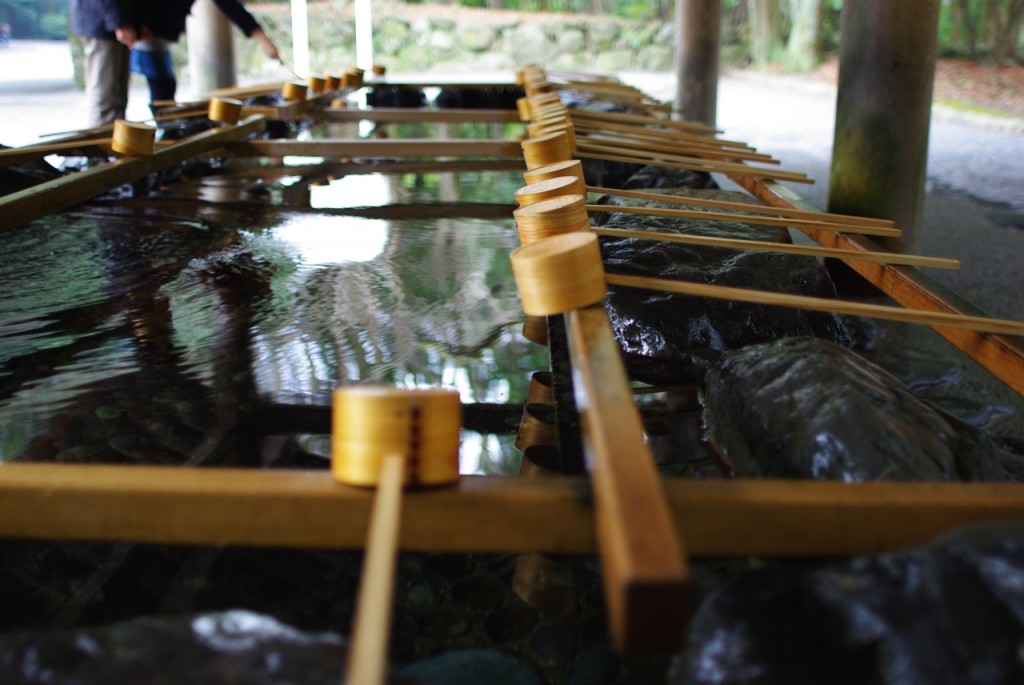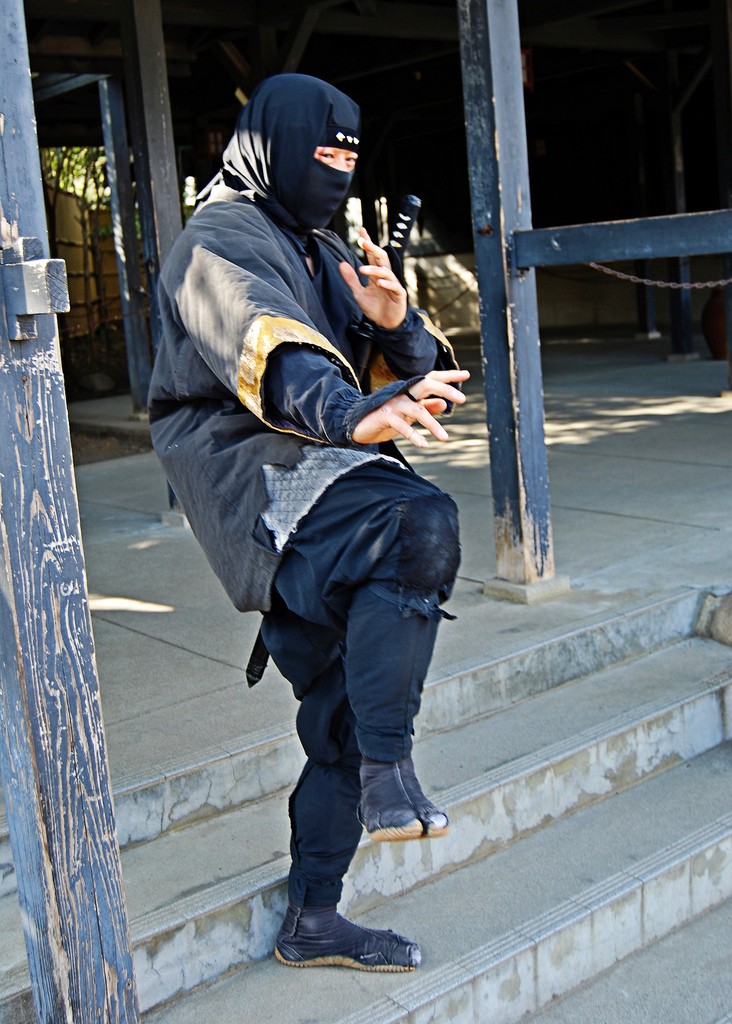
While Japan is home to countless shrines, the simplicity of Ise Jingu Shrine’s official name?Jingu, or “The Shrine”?not to mention the gorgeous grounds that convey the spare but awesome essence of Shinto, both speak of a particular kind of holiness ?Come and experience this sacred treasure for yourself.
What you need to know:
Visiting Ise Jingu Shrine
Located in the city of Ise in Mie prefecture, Japan, Ise Jingu Shrine is the region’s main sightseeing destination, with 7 million worshippers coming through every year. Despite being called, “The Shrine,” however, Ise Jingu Shrine is actually home to more than 125 separate Shinto shrines, with Geku (“The Outer Shrine”) and Naiku (“The Inner Shrine”) as the focus. Naiku, which centers on the Shinto sun goddess, Amaterasu Omikami, makes its home to the south of central Ise City. Geku, devoted to the agriculture and industry god, Toyouke Omikami, can be found within a good walking distance of Naiku (about six kilometers away).
The shrines are not as grand as one might expect; they are simple wooden structures flanked by dignified trees, possessing a spare beauty that is unforgettable. The Sacred Mirror, one of the Three Sacred Treasures of Japan (Sanshu no Jingi) is housed within Naiku, typically wrapped and stored in a cupboard. Not surprisingly, pictures around those areas are strictly forbidden.

Long-held Shinto tradition dictates that both shrines be rebuilt in 20-year cycles. As the most recent one was in 2013, 2033 will mark the next phase and the 63rd total reconstruction. Unlike most other Shinto shrines, the Ise Shrines are built in a purely Japanese architecture style almost entirely uninfluenced by mainland Asian sensibilities. Pilgrims and tourists alike follow a fixed route along the road connecting the two shrines, visiting the Outer Shrine first before continuing to the Inner Shrine.
What to do around Ise Jingu Shrine

The Ise shrines are ringed by Ise-Shima National Park and other notable attractions including the Saiku, site of the imperial residence during the Heian period, and the famed “wedded rocks” (Meoto Iwa), two ocean-sunk formations near Ise City’s small coastal town of Futami that symbolize the union of husband and wife. They are bonded with a special shimenawa rope, which can denote a holy, purified space in the Shinto religion.
Sengukan Museum
The history of Isle Shrine comes alive in this museum, which has since 2012 devoted itself to chronicling the saga of the shrine’s 60-plus rebuildings over many years. Painstakingly detailed replicas of both the shrine’s main building and sanctuary are among the various exhibits. Although all signs are in Japanese only, tourists can experience full enjoyment of each exhibit through an English-language audio guide and pamphlet.? Admission costs 300 yen and the museum is open every day from 9:00 to 16:30, with closings every 4th Tuesday of the month.
Azuchi Momoyama Bunka Mura, aka Edo Wonderland Ise

Throughout Ise Shrine’s various grounds and historical exhibits, the past is held at a distance; at Azuchi Momoyama Bunka Mura, you can get one step closer to experiencing it for yourself. In keeping with its status as a theme park in addition to a historical teaching ground, Azuchi is also called Edo Wonderland Ise. It aims to replicate a tiny Momoyama period village, and even features a replica of Azuchi Castle. The structures there not only detail what life was like then, even showcasing an old-style hairdresser, but also feature more imaginative ninja, samurai, geisha, ghost and monster themes, dramas and action-shows throughout.? For a bit of excitement to break your meditative reverie, come to Azuchi Momoyama!
Getting to Ise Jingu Shrine from Kyoto, Nagoya, and Tokyo
From Tokyo via Shinkansen
Getting to the Shima Peninsula where Isle Shrine is located first requires traveling from Tokyo to Nagoya. Highway bus and local train options are available, but the JR Tokaido Shinkansen (bullet train) line is by far the fastest and most convenient route for tourists. There are 3 main types of bullet trains, each differentiated by speed-to-destination. The quickest is Nozomi at 100 minutes, followed by Hikari at approximately 110 minutes; Kodama takes 3 hours to Nagoya.? Keep in mind that the Japan Rail Pass is not valid for the Nozomi, the fastest train. Non-reserved, one-way seats cost? 10,360 yen, while reserved seats run at approximately 11,000 yen. Check the JR English website for details.
From Nagoya
Kintetsu Railways
Once you arrive in Nagoya, one option is to travel to Ise via the Direct Kintetsu limited express (tokkyu) at 2770 yen. It takes about 1 hour and 20 minutes, but since every seat is reserved you do not have to worry about standing up during the journey. Please remember to get off at the right place, as trains also often make stops at Kashikojima and Toba.
You can also cut costs by going the non-reserved route and taking a slower express train (kyuko) for 1450 yen, which takes approximately 1 hour and 40 minutes to reach Ise. However, given that you must transfer at Ise-Nakagawa Station, first-time Japan tourists are recommended to take the tokkyu express.
Japan Railways (JR)
To get to Nagoya to Ise via Japan Railways (JR), take a “Mie” rapid (kaisoku) train for 2000 yen. Although the trip is only 10 minutes shorter than the above kyuko express, it actually costs 550 yen more; again, the advantage is in not having to transfer trains.
From Kyoto
Kintetsu Railways
Those traveling from Kyoto to Ise will need to catch one of the two hourly limited express trains at either Uji-Yamada Station or Ise-shi. Costing 3620 yen, reserve seating aboard one of these trains should make the 2 hour trip quite comfortable. Don’t count on a direct route; even via express, you will probably require a transfer at Yamamoto-Yagi Station.
If you don’t mind adding 45 minutes onto your trip, you can pay just 2010 yen for a less speedy express train with a guaranteed train transfer at Yamato-Yagi Station. Just be aware that with just 2 connections per hour along this route, it is very important not to miss your train.
Shinkansen & Japan Railways (JR) Trains
The JR Tokaido Shinkansen, which takes anywhere from 35 to 55 minutes between Nagoya and Kyoto, is also available. After arriving in Nagoya, you can get to Ise by taking the aforementioned “Mie” rapid train ?for approximately 7500 yen. Expect to travel for about 90 minutes.
From Ise-shi or Toba Station
From Ise Station, simply walk ten minutes to reach The Outer Shrine. Visit The Inner Shrine via the CAN bus, which stops at both main stations (Ise-shi and Toba) as well as all major attractions at a daily cost of 1000 yen. Includes discounts on admissions to various attractions.
Ise Shrine Opening Hours
Free Admission
5:00 to 18:00 (January to April, September)
5:00 to 19:00 (May to August)
5:00 to 17:00 (October to December)
Accessing WiFi at Ise Shrine
Whether you are wrapped in contemplation at the Inner Shrine or enjoying a bit of fun at the ninja museum at Azuchi Momoyama, chances are you’ll want to keep in touch with your friends and family about your experiences. In order to ensure coverage while visiting Ise Shrine we suggest renting a WiFi plan backed by Docomo, Japan’s mobile carrier with the country’s largest coverage area. That way, the only thing you’ll have to reflect on is what a great trip you’re having!
Once you’ve booked a Japan WiFi rental from Sakura Mobile, there will be nothing getting in the way of your travel adventures!


